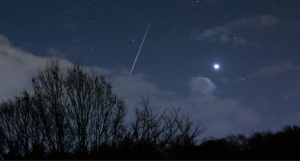Get your telescopes and cameras ready as space fans are in for another celestial treat this July and August. The Perseids, one of the brightest meteor showers of the year, is set to grace our skies, with the chance to see up to 50-100 meteors per hour.
Every year our skies are lit up by returning meteor showers, from Quadrantids to Lyrids, Draconids to Orionids. If the weather conditions are in our favour and the moon isn’t too bright, it’s possible to see some spectacular shooting stars in action.
The last meteor shower to make an appearance in 2019 was the Lyrids, peaking on April 22 and April 23 – however there are still plenty of chances to capture more showers this year.
But when, where and how can you see the meteor showers of 2019? We’ve compiled a complete guide to the magnificent, must-see sights, which have left mankind awestruck for centuries.
From the science behind meteor showers to the best stargazing spots, here is everything you need to know.
What exactly is a meteor shower?
A meteor shower occurs when Earth passes through the debris stream occupying the orbit of a comet – or, in simpler terms, when a number of meteors flash across the sky from roughly the same point.
Meteors are sometimes called shooting stars, although they actually have nothing to do with stars.
Read more HERE
Ask me anything
Explore related questions





